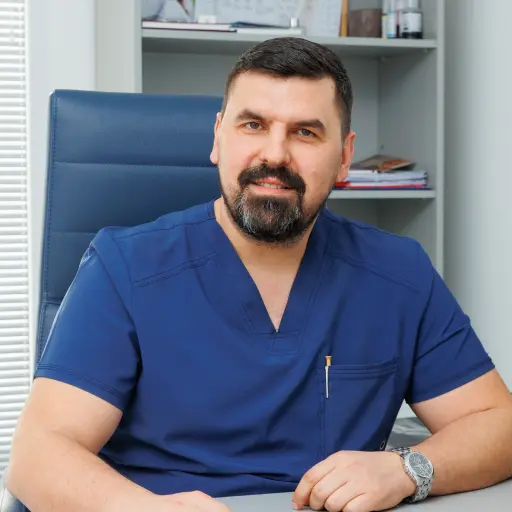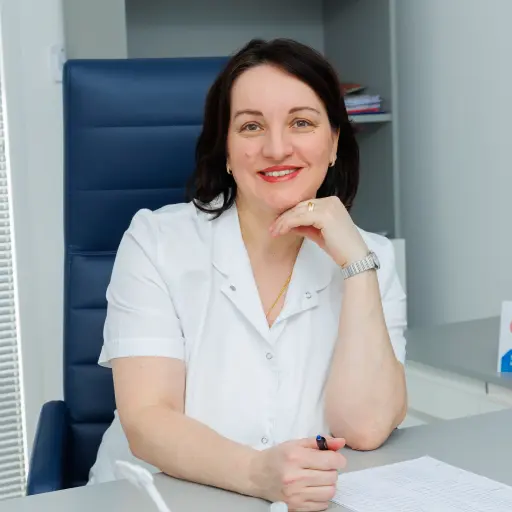Specialist Consultation with a Gastroenterologist
A specialist consultation is performed by a gastroenterologist—a physician who focuses on diagnosing, treating, and preventing diseases of the digestive system. After gathering all necessary medical history and test results, the gastroenterologist will establish a diagnosis and propose a treatment plan, which may include dietary modifications, medication, and/or surgical intervention
Follow-Up Specialist Consultation with a Gastroenterologist
A follow-up specialist visit is a subsequent appointment with the gastroenterologist, intended to monitor the patient’s condition, evaluate treatment efficacy, and adjust the therapeutic plan to ensure the best possible outcomes.
Ultrasound Examination by Gastroenterology
An ultrasound examination of the abdomen (often referred to simply as “abdominal ultrasound”) is a non-invasive, painless, and safe diagnostic method that uses high-frequency sound waves to create images of organs within the abdominal cavity. This exam enables assessment and diagnosis of diseases affecting the digestive system and related organs.
Gastroscopy
Gastroscopy (esophagogastroduodenoscopy) is a diagnostic procedure that examines the upper digestive tract—namely, the esophagus, stomach, and duodenum—using a thin, flexible instrument called a gastroscope. Gastroscopy is crucial for diagnosing and, in some cases, treating various conditions of the upper gastrointestinal tract.
Gastroscopy with Anesthesia
Gastroscopy with anesthesia is a diagnostic procedure of the upper digestive tract (esophagus, stomach, and duodenum) performed while the patient is sedated or under general anesthesia. Unlike gastroscopy with only local numbing, general anesthesia is used to make the procedure completely painless and more comfortable for the patient.
Colonoscopy
Colonoscopy is a diagnostic procedure that allows the physician to thoroughly inspect the entire large intestine (colon) and the terminal portion of the small intestine (terminal ileum). It is used for diagnosing, screening, and treating various conditions of the digestive system.
Colonoscopy with Anesthesia
Colonoscopy with anesthesia is the standard procedure for examining the colon and terminal ileum while the patient is sedated or under general anesthesia. The goal is to make the procedure entirely painless and as comfortable as possible, eliminating discomfort, pain, and anxiety.
Combined Colonoscopy and Gastroscopy with Anesthesia
This combined approach involves performing both gastroscopy (inspection of the esophagus, stomach, and duodenum) and colonoscopy (inspection of the entire colon and terminal ileum) in a single session, with the patient under sedation or general anesthesia for both procedures. This efficient method provides a comprehensive view of the entire digestive tract in one visit, reducing stress and recovery time for the patient.
Biopsy During the Procedure
A biopsy during an endoscopic procedure refers to taking a small tissue sample from a suspicious area inside the body. The goal of a biopsy is to send the sample for histopathological analysis under a microscope, in order to obtain an accurate diagnosis.
Polypectomy
Polypectomy involves removing polyps—ranging from a few millimeters up to four centimeters in size—from the digestive tract during gastroscopy and/or colonoscopy. These polyps are then sent for histopathological examination to establish a definitive diagnosis of various polyps and tumors of the digestive tract.
EMR (for Polyps ≥ 25 mm)
Endoscopic Mucosal Resection (EMR) is an advanced endoscopic technique used to remove large polyps (usually 25 mm or larger), as well as flat or broad-based lesions from the mucosal layer of the digestive tract (most commonly in the colon, but also in the esophagus or stomach). Previously, such polyps often required surgical intervention; today, EMR enables minimally invasive removal without opening the abdominal cavity.


